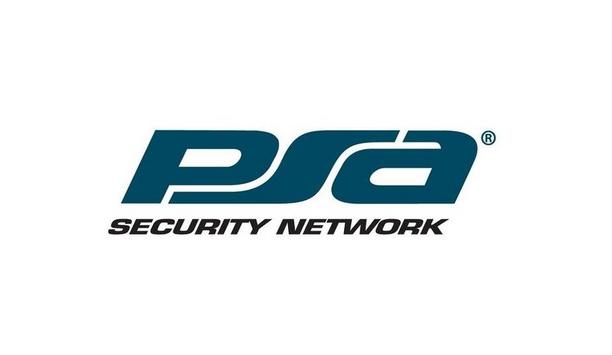Genea - Experts & Thought Leaders
White papers from Genea
Cloud-based access control and occupancy management to safeguard workplaces
DownloadLatest Genea news & announcements
The PSA Network (PSA), the world’s largest consortium of professional systems integrators, announced the lineup of speakers and sponsors for PSA TEC 2025 (TEC) in Aurora, Colorado, March 9-12, at the Gaylord Rockies Resort & Convention Centre. “PSA TEC 2025 is shaping up to be an amazing event from the industry-pioneering education and certifications to access to the top manufacturers in the industry,” said Matt Barnette, president and CEO of the PSA Network. “The power of PSA truly lies in the relationships we foster and cultivate, and TEC is another extension of this.” TEC’s Industry Unplugged sessions This year’s educational lineup is led by keynote speaker, Ryan Estis. Estis will deliver the presentation: Sell for Impact-Delivering Value and Winning Customers in the New Economy. Lee Odess, the voice of the global access control industry, will host TEC’s Industry Unplugged sessions interviewing executives like Tom Cook from Hanwha Vision and Michael Wong of Genea. Multiple other breakout sessions, certifications and mainstage sessions will also take place. Latest innovations and relationships TEC 2025 is exclusive to PSA owners, members and sponsors providing premier educational content TEC 2025 is exclusive to PSA owners, members and sponsors providing premier educational content and networking opportunities between integrators and technology partners. Over the four days, integrators will have ample opportunities to meet with technology partners, learn about their latest innovations and solidify business relationships. Sponsors This year’s sponsors are industry-pioneering manufacturers and solutions providers, including: Summit Altronix Corporation High Country AMAG Technology Hanwha Vision HID Johnson Controls Milestone Zenitel Front Range 3millID Acre Security Aiphone Alvarado ASSA ABLOY BCD Bosch Digital Watchdog Farpointe Data LenelS2 LifeSafety Power March Networks OpenEye SECLOCK Solutions360 Velasea Vicon Wavelynx Windy City Wire Western Slope Ai-RGUS AMG Security Genea Hirsch IML Security Supply NETGEAR ProdataKey Tabletop ALConsulting D-Tools GSA Schedules Jetbuilt NSCA Plante Moran Snellings Walters Insurance Agency SPRX Swell Zitko First Time Session Sponsor Vector Firm Access to networking events “PSA TEC 2025 would not be possible with our amazing sponsors,” said Brittany Board, director of technology partners at the PSA Network. “We are thankful for their support and looking forward to another opportunity to drive connections and business opportunities.” Registration for TEC is open and provides access to all networking events, meals and conference courses.
Siemens and Genea recently announced a second collaborative effort to provide security professionals and facility managers with improved security using the cloud. The security solution allows teams to leverage their existing technology, like security cameras, door readers, controllers and more, and manage it all from a modern dashboard, anytime, anywhere. Siemens’ security customers Through Genea’s customisable, cloud-based, open API platform, Siemens’ security customers can now integrate various current building systems or applications, such as visitor management, Apple Wallet, video management or identity management. Genea makes it possible to assign and distribute NFC and Bluetooth mobile credentials directly to users’ smartphones. As an added convenience, credentials can also be stored in Apple and Google Wallet, for easier accessibility. Integrated systems Customers can transition to the cloud without paying to replace their entire hardware system Since Genea runs on non-proprietary door readers and Mercury controllers, customers can transition to the cloud without paying to replace their entire hardware system. This commitment to open standards helps guarantee that the integrated systems will provide exceptional performance while safeguarding customers' investments in security infrastructure. Genea's advanced platform "Teaming up with Genea underscores our dedication to expanding the Siemens Connect Ecosystem program by delivering top-tier security solutions using non-proprietary Mercury hardware," said Rich Reidy, US Security Segment Head of the Buildings business at Siemens Smart Infrastructure USA. "As a trusted and proven pioneer in the industry, Genea's advanced platform and flexible technology align perfectly with our goal of offering cutting-edge, adaptable solutions for the future.” Flexible security solution Genea and Siemens first collaborated 5 years ago with the goal of enhancing real estate operations Genea and Siemens first collaborated five years ago with the goal of enhancing commercial real estate operations. With Genea On-Demand HVAC and Genea Submeter Billing, property teams were able to drive significant energy savings and operational efficiencies. This latest joint effort gives Siemens’ customers a flexible security solution that remains adaptable to the evolving needs of enterprises, universities, schools, healthcare facilities, commercial real estate properties and other markets. Transition to cloud-based security "We are excited to once again collaborate with Siemens, a company that shares our dedication to innovation and excellence," said Eric Moe, Senior Vice President of Sales, Security at Genea. "This latest endeavour that targets the physical security market allows us to pair with an industry pioneer and help more organisations transition to cloud-based security.”
HiveWatch, a physical security software company reimagining how organisations keep their people and assets safe, has partnered with Genea, a smart building technology provider specialising in cloud-based security built on non-proprietary hardware. The partnership allows HiveWatch® GSOC Operating System (OS) customers to leverage the innovative solutions from Genea to strengthen their security posture across their organisations. Security management platform “The collaboration between Genea and HiveWatch allows security professionals to level up their security with expansive oversight and data-driven decision-making,” said Mike Maxsenti, General Manager of Security, Genea. “HiveWatch has proven to be a pioneer in thinking differently about security functionality, and we’re excited to incorporate the option to expand customer relationships using its security management platform.” HiveWatch® GSOC OS Customers can connect Genea devices alongside other disparate access control and camera systems Genea offers a cloud-based access control and visitor management platform built on non-proprietary hardware that empowers users with the ability to monitor their buildings and provision credentials from anywhere. When coupled with the HiveWatch® GSOC OS, customers can connect Genea devices alongside other disparate access control and camera systems, creating a single view and platform for GSOC operators to work from. Data-driven insights “Genea’s open API technology gives users the ability to not only seamlessly add their innovative Mercury-based access control to a security program, but provides more options to companies that may not have the ability to rip-and-replace at scale,” said Ryan Schonfeld, Co-Founder & CEO, HiveWatch. “The partnership with Genea adds another tool for pioneers to level up their security programs and ensure GSOC operations are viewed as more than a ‘cost centre,’ but as a way to provide organisations with data-driven insights and more value that drives the entire business forward, regardless how many systems they use today.” Genea and HiveWatch will discuss how security strategy is impacted by disparate systems in an upcoming webinar, “How to Solve the Disparate Systems Challenge,” at 10 a.m. PT on Monday, October 21.
Insights & Opinions from thought leaders at Genea
You’re no psychic. You probably don’t have the power of clairvoyance. But guess what? When it comes to your security, none of that matters. You can still create future-proof security by properly equipping yourself. Here’s how. Understanding access control Security is changing faster than ever before. With new threats inside the workplace and smaller security teams taking on more tasks, IT and security personnel must automate their processes using new technology. One difficult aspect, however, is choosing the right technology. By analysing technological trends and assessing your current and future needs, you can preemptively find solutions. Ultimately, in the long run, these solutions will save you time and expense. Ultimately, in the long run, these solutions will save you time and expense But how do you distinguish a momentary trend from a long-term solution? Do you really need to pay extra money for that feature, or will you stop using it in a year? To properly invest in future-proof access control, IT and security teams must look at three different aspects of technology: Flexibility, Scalability, and Efficiency. Access control system Flexibility: Hardware It’s not the sexiest thing to talk about, but hardware is crucial to any security system. Readers, locks and controllers are the backbone of any access control system, and choosing the right hardware is essential when it comes to planning for the future. Broadly speaking, hardware falls into two categories: proprietary and non-proprietary. For those teams considering a new installation, choosing between proprietary access control and non-proprietary access control is a decision that will affect your organisation over the long term. Long-term unseen expenses Proprietary Hardware Pros: Upfront costs can be less expensive; One vendor for hardware and software. Cons: Locked into one vendor; Long-term unseen expenses. Imagine buying a microwave that only cooked foods produced by the microwave manufacturer Imagine buying a microwave that only cooked foods produced by the microwave manufacturer. In a booming economy, the manufacturer produces all sorts of tasty treats—popcorn, lasagna, pies. But when the economy takes a dip, the manufacturer scales back its production and announces it will only sell liver and onions. Now maybe you’re a liver and onions fan, but on the off chance you like variety in your diet, this would be a problem. Your microwave has been rendered useless and has essentially become a liver and onions cooking machine. Potential system vulnerabilities Like the microwave example, proprietary hardware leaves companies at the mercy of the manufacturer. If the manufacturer goes out of business, the system will cease to function, and customer support will be non-existent. Consequently, your security team will likely have to install an entirely new hardware system. Costly, right? Let’s consider a less dramatic scenario. What if a manufacturer, instead of closing, decides to scale back its operations? It provides less frequent updates and fewer new feature releases. Without these updates, your security becomes more vulnerable and outdated. In the long run, choosing proprietary hardware can end up costing teams a lot more than they are saving and expose potential system vulnerabilities. Non-proprietary hardware Pros: Free to switch software vendors; Long-term system flexibility. Cons: Upfront costs can be more expensive. Non-proprietary hardware gives teams the power to switch software providers at any point Where proprietary hardware fails, non-proprietary thrives. The most important aspect of a non-proprietary system is the flexibility it grants. Non-proprietary hardware gives teams the power to switch software providers at any point, without replacing the hardware. In the aforementioned microwave scenario, the customer was relegated to a life of liver and onions because of their proprietary microwave. However, had they chosen a non-proprietary microwave, then they could have eaten any meal. They wouldn’t be limited to the food options sold by the manufacturer. Non-proprietary hardware also accounts for much of the current marketplace. If your team currently uses non-proprietary hardware—Mercury Security, HID, Wavelynx, or STid-- but is considering switching to a cloud-based provider, then something called a software takeover could be useful. A software takeover is a process by which a new software provider replaces a former one, though no new hardware is installed. Scalability: on-prem or the cloud? Whether working for an enterprise, hospital or school district there is always potential for expansion. As an organisation grows or shrinks, so must its access control. At your latest ‘all-hands’ meeting, the CEO announces that you will be aggressively expanding At your latest ‘all-hands’ meeting, the CEO announces that you will be aggressively expanding. They want security to be up and running in three new countries by the end of the quarter. Luckily, you have just finished migrating from on-premises access control to the cloud. You handle scaling the operation with relative ease. IT and security teams must choose between cloud access control and legacy on-premises equipment. The greatest determination of scalability lies with the server. Cloud-based access control Pros: Easily scalable; Less regular maintenance; More secure; Integrations; Centralised storage. Cons: On-going subscription costs; Migrating from on-premises access control. When asked about the trends shaping the near future of access control, 38% of respondents said cloud hosting would be an important feature. Though this was a lower percentage compared to the responses at the beginning of Covid-19 (50% mentioned cloud), cloud security is poised to grow by as much as 13.7% each year. Connecting software stacks Here are some facts about cloud-based access control: Security: In the past, what held the cloud back were concerns about cyber security. But advances in security, including 256-bit encryption for data at rest and data in transit, have significantly improved the cloud. Integrations: Talk to any IT director who has already made the migration from on-prem to cloud, and they’ll mention ‘integrations.’ The cloud gives administrators the ability to more quickly connect their software stacks. Some popular integrations include visitor, video, identity, and notification management. Though integrating on-premises access control is possible, it takes significantly longer and is more costly than integrating with the cloud. Remote Access: Since COVID-19, IT and security professionals have been searching for remote ways to work. However, remotely connecting to an on-premises access control system often requires a VPN. The cloud allows teams to work remotely and access any of the buildings in their portfolio while off site. Physical access control Efficiency: Software Features Another important aspect of physical access control is its software features Another important aspect of physical access control is its software features. While the needs vary from industry to industry, some overlap exists. For instance, a global dashboard can give oversight across buildings on college campuses or offices of a national enterprise. A security team in New York can monitor the access events or provision a new employee in Tokyo. Broadly speaking, IT and security teams are looking for software that boosts day-to-day efficiency and is customisable. These features include: Custom Reports- Spreadsheets or PDFs that give you an aggregated view of access events that have occurred over a given period. Custom Roles- Administrators the ability to create an organisational framework by access permissions. Badges- Create branded physical or digital badges according to permission level. Emergency Add-ons- Custom door plans and Muster reporting can help in crisis situations. For example, if there is an active shooter, certain doors can be left open or locked automatically to prevent the shooter from gaining access to certain areas. Cloud access control has made it easier to implement new features. Ultimately, the cloud gives IT and security administrators more power to quickly request and deploy the features they find most worthwhile. Final thoughts on security With the rapid technological transformation brought about by cloud and mobile access control, it’s important that IT and security teams stay ahead of the curve. In order to decide which system is the right choice for you, it’s important to evaluate not only your current but also future needs. Creating a checklist of the most important features and deciding whether to host all the server yourself are two important steps to pinpointing the perfect access control system. For more information, ask access control providers for a free demo.
Using artificial intelligence (AI) to automate physical security systems
DownloadA modern guide to data loss prevention
Download7 proven solutions for law enforcement key control and asset management
DownloadThe truth behind 9 mobile access myths
DownloadAccess control system planning phase 2
Download












